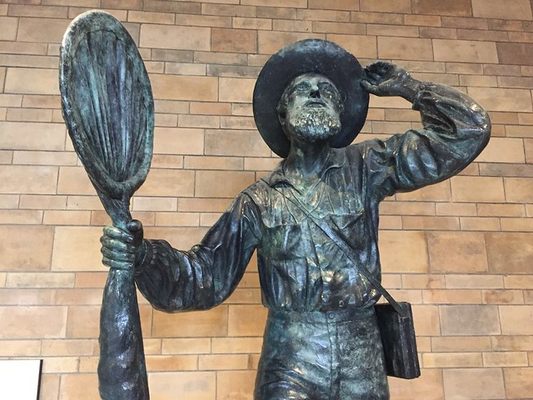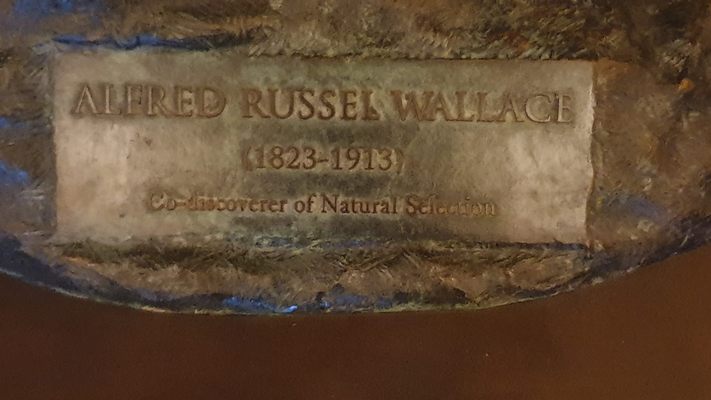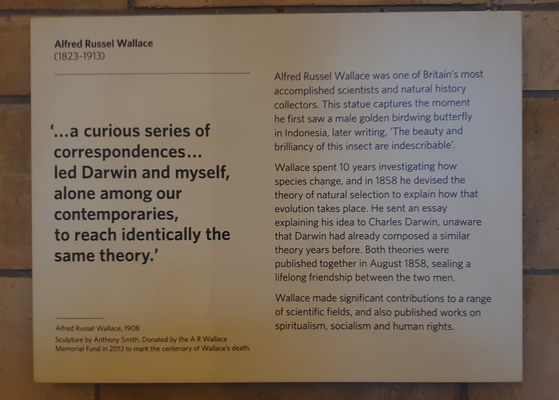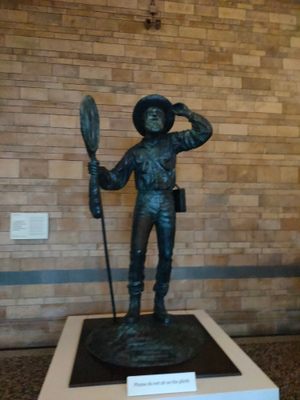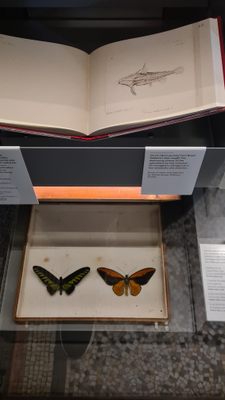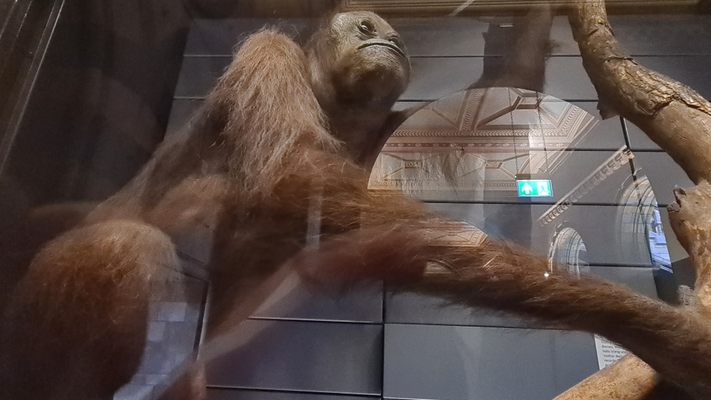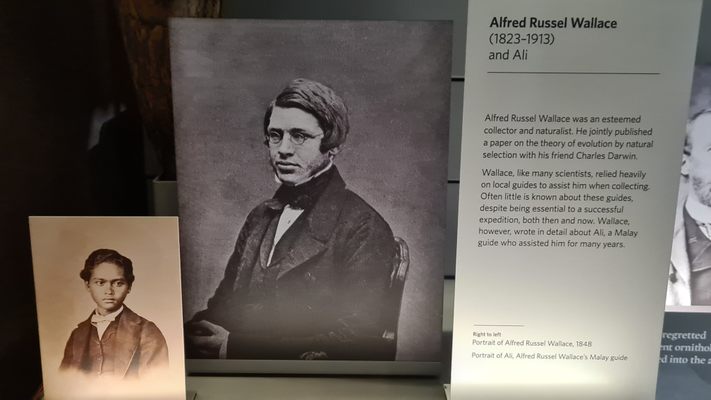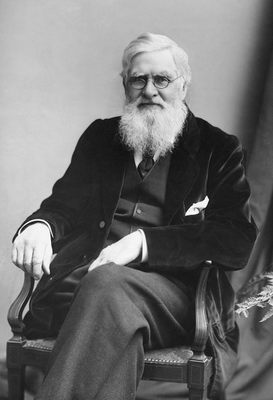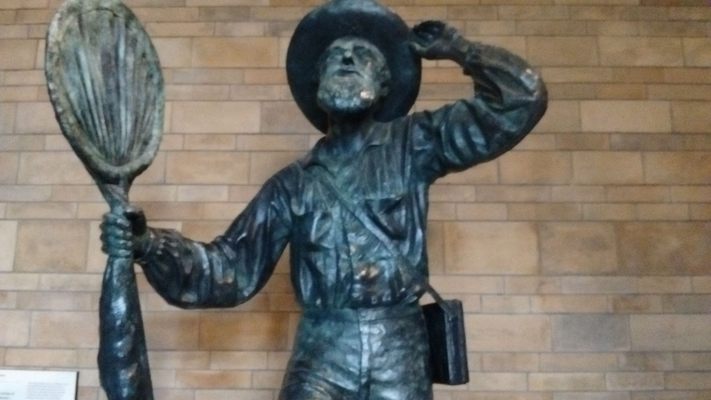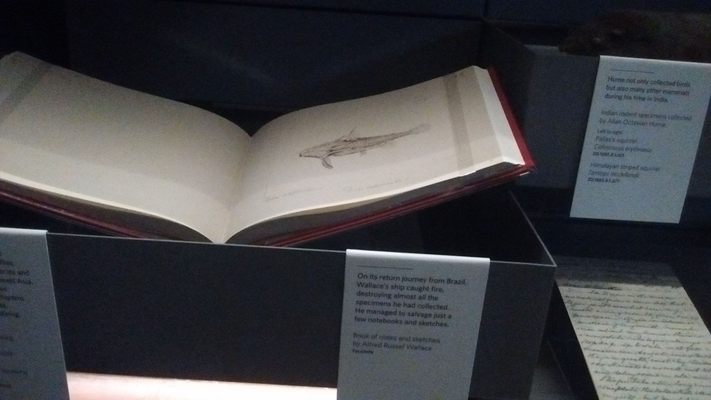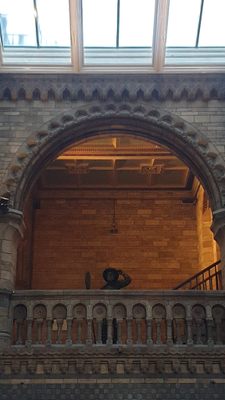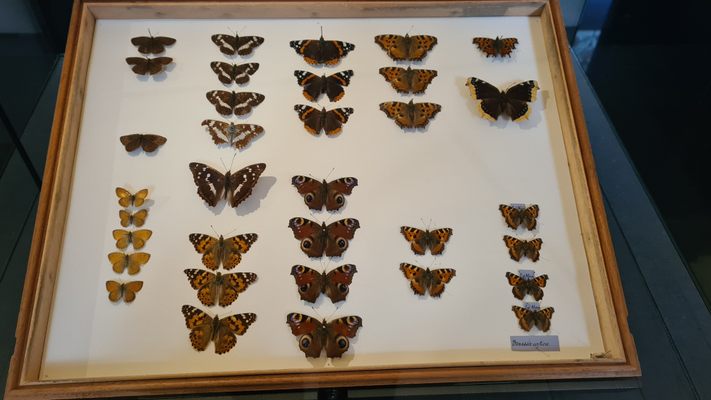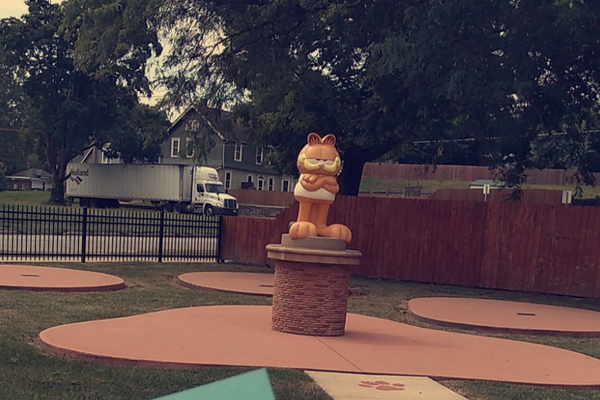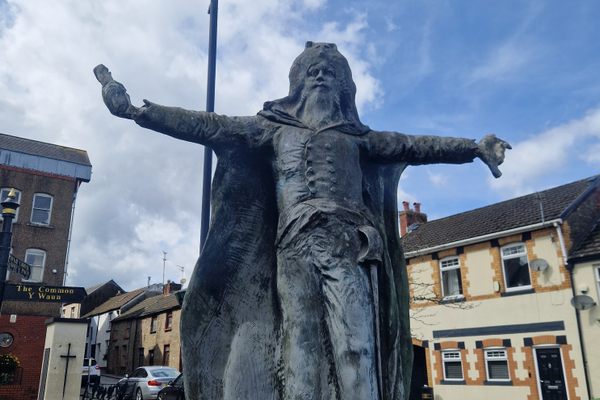About
A slightly larger than life-size bronze statue depicting an intrepid explorer and naturalist can be found in a little visited corner of the Natural History Museum, London. Alfred Russel Wallace (1823-1913) is best known for independently conceiving the theory of evolution by natural selection and jointly publishing the idea with Charles Darwin in 1858, fifteen months before Darwin published Origin of Species. Although Wallace is often forgotten in the annals of science history, he played a major role in elaborating and defending the theory during his long and productive life.
The statue depicts the moment in 1859, when Wallace saw the magnificent male of the golden birdwing butterfly (Ornithoptera croesus) for the first time in the rainforest of Bacan Island, Indonesia. He is looking upwards and by following his gaze the viewer will see a bronze model of the butterfly some distance away on the facing wall. This is perhaps the most spectacular of all the hundreds of butterfly species Wallace discovered during his famous 8-year expedition to the 'Malay Archipelago' (Singapore, Malaysia, Indonesia and East Timor) and his description of the capture of the first male has become legendary:
"The beauty and brilliancy of this insect are indescribable, and none but a naturalist can understand the intense excitement I experienced when I at length captured it. On taking it out of my net and opening the glorious wings, my heart began to beat violently, the blood rushed to my head, and I felt much more like fainting than I have done when in apprehension of immediate death. I had a headache the rest of the day, so great was the excitement produced by what will appear to most people a very inadequate cause." (from Wallace's 1869 book The Malay Archipelago).
The statue was sculpted by Anthony Smith, who produced an acclaimed statue of Charles Darwin as a student for Cambridge University in 2009. Research into Wallace's apparel and collecting equipment was done by Wallace scholar George Beccaloni, who also led the fundraising campaign. The statue was donated to the museum by the A. R. Wallace Memorial Fund, where it was unveiled by Sir David Attenborough on the 7 November 2013 - the 100th anniversary of Wallace's death. It was originally installed outside the Darwin Centre 2 building (which houses many tens of thousands of Wallace's insect specimens) near the wildlife garden, but has since been moved to the end of the second floor corridor above the museum's Hintze Hall where few visitors to the museum see it.
Along with the statue, several historic artifacts associated with Wallace may be seen in the museum. Butterfly specimens collected by him during his expeditions to the Amazon and the Malay Archipelago are on display in the Treasures Gallery. Additionally, a taxidermy specimen of an orangutan, collected by him in Sarawak, Borneo, can be seen in the cabinet of curiosity on the first floor above the Hintze Hall.
Related Tags
Know Before You Go
The Natural History Museum is open daily from 10 a.m. to 5:50 p.m. and entrance is free, except to special exhibitions.
Community Contributors
Added By
Published
July 28, 2019
